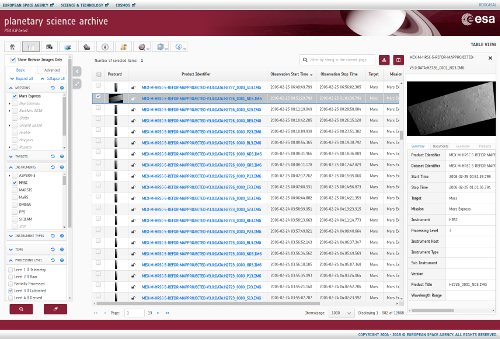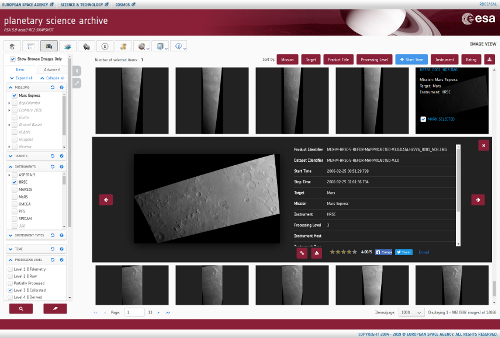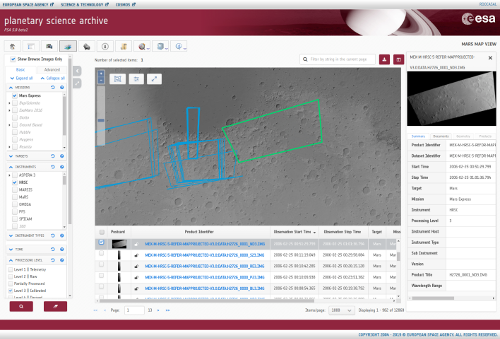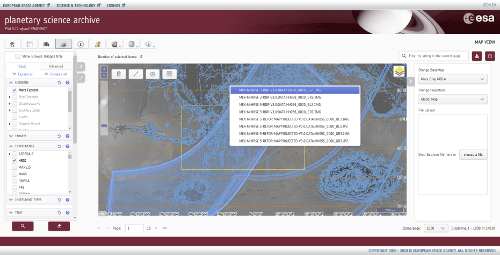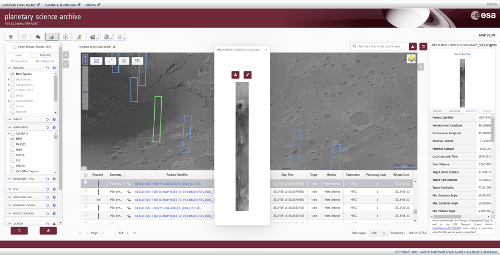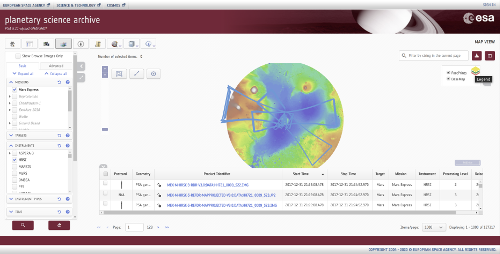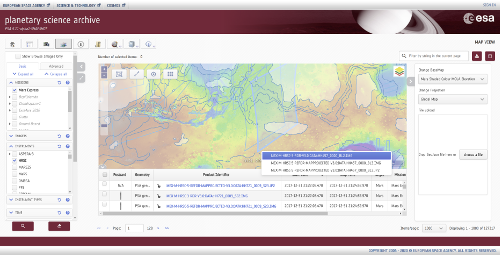Introduction
The Raman Laser Spectrometer (RLS) [1] is one of the Pasteur Payload instruments belonging to the analytical suite onboard the ExoMars’ Rosalind Franklin Rover that will perform Raman spectroscopy on samples extracted from the Martian subsoil for a definitive identification and characterization of minerals and biosignatures [2] in order to address the question of whether life has ever existed on Mars.
At the whole life cycle of the instrument, quite testing campaigns are accomplished with the flight and flight-representative models (RLS FM, FS and EQM). Outcomes from some of them, mainly the ones dedicated to get functional and performance capacities of the instrument, may be very useful as reference results during the operations phase in Mars and, also, to learn about the instrument itself (possible design improvements, ageing influence, etc.).
But all these outcome data is not easy to manage, on the one hand because lots of telemetries and parameters are generated during each test and, on the other hand because it is very important to have into account the specific conditions for each test.
So, for RLS, the need to archive properly all this data, including test conditions, and to ease its analysis led to the challenge of developing a tool for scientist and engineers to handle this outcome, so that they can easy access to data and compare results from different tests and modes and perform long-term analysis of the RLS instrument scientific and technical performance.
In this context, RASTA (RLS Archive and Supporting Tool for Analysis) has been conceived as a solution for managing all the RLS data generating during different on-ground test campaigns) in addition to those that will be generated by the RLS FM during operations at Mars surface.
RASTA (RLS Archive and Supporting Tool for Analysis)
The overall RASTA architecture is shown in Figure 1. RASTA has 3 main elements: RASTA-Parsers, RASTA-DB (Database) and RASTA-MS (Matlab® Scripts).
Therefore, RASTA tool consists in a structural and relational database and several parser files that allow to analyze the data generated by the instrument and insert the raw data into RASTA-DB. Once all of the above is done, the users can consult the available data to perform their engineering or science analysis using the user-oriented RASTA-MS (Matlab® Scripts).
As depicted in Figure 1, RLS sessions act inside the RASTA architecture as the input files, which could be found in two formats:
- RLS IDAT (Instrument Data Analysis Tool) .rls files: for ground session performed with the End-to-end Ground Testing Framework [3] as EGSE. Those sessions are generated by RLS IDAT, a software tool that can be used for the reception, decodification, calibration and verification of the TMs (science and housekeeping) generated by the RLS instrument.
- PDS4 (Planetary Data System, version 4) files for ground and flight sessions performed with the Rover different models: Rover OBC (onboard computer) inside ATB (ExoMars rover Avionic Test Bench), GTM (ExoMars rover Ground Test Module) or PFM (ExoMars rover Proto-flight Model). PDS4 [4] is the official archive system for the ExoMars Mission data.

Figure 1- RASTA architecture diagram
According to the type of the RLS session input files, the RASTA-Parser extracts the relevant data and stores it into the RASTA-DB. RASTA-DB is a relational open source database developed in SQL language hosted on a server, for allowing ‘read permission’ access to RLS scientists’ and engineers’ community. In order to properly archive each RLS data, a dedicated metadata file is linked to the data provided, so that every aspect of the session like: test purpose, test sequence, mission phase or environment conditions could be addressed to the RASTA-Parsers, before the session is committed into RASTA-DB.
Finally, in order to support the users’ analysis, a software library based on Matlab® language has been developed. This library consists of:
- Low-level library: implementing basic searches in RASTA-DB.
- Use cases: specific analysis, implemented as sets of calls to ‘Basic scripts’ plus some additional logics or math.
The main feature of the tool is that the users can develop their own Matlab® custom analyses by calling the basic ones as ‘building-blocks’ for implementing their analyses.
Conclusion
RASTA provides a solution for archiving and supporting the analysis of the large amounts of data generated by RLS in its multiple campaigns performed not only in ground, but also during Mars operation in the coming years. It is a powerful tool to do long term analysis of scientific and engineering performance across different sessions of different RLS models.
Acknowledgements
MINECO grants ESP2014-56138-C3-1-R, ESP2014-56138-C3-2-R, ESP2107-87690-C3-1-R, ESP2107-87690-C3-3-R.
References
[1] Moral, A.G., et al, A Raman Spectrometer for the ExoMars 2020 Rover, European Planetary Science Congress 2017, 17-22 September, 2017, Riga Latvia, id. EPSC2017-1001.
[2] Rull, F., et al, The Raman Laser Spectrometer for the ExoMars Rover Mission to Mars, Astrobiology, 2017, vol. 17(6-7), 627-654.
[3] J. Zafra et al., End-to-end Ground Testing Framework for Raman Laser Spectrometer (RLS) on board Exomars 2020, in Simulation and EGSE for Space Programmes- sesp 2019.
[4] Jet Propulsion Laboratory California Institute of Technology Pasadena, California, Planetary Data System Standards Reference, Version 1.14.0, may 22, 2020.


